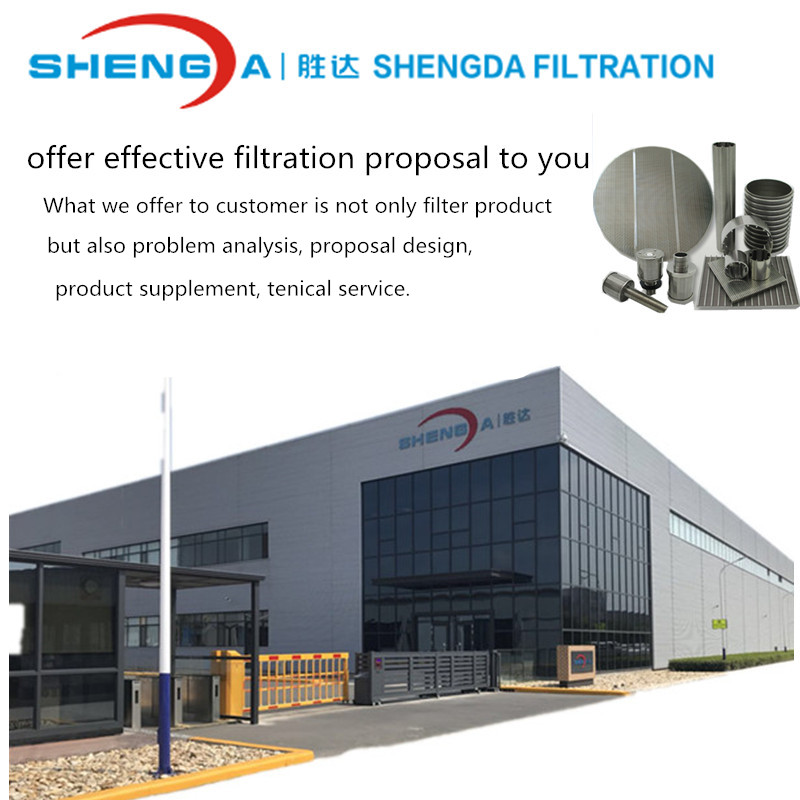
Privacy statement: Your privacy is very important to Us. Our company promises not to disclose your personal information to any external company with out your explicit permission.
86-373-2615111
Filters are classified into three types based on the method of obtaining driving force: gravity filters, vacuum filters, and pressure filters.
Gravity Filters
Gravity filters utilize the pressure formed on the filter medium by gravity and the differential pressure between the suspension as the driving force for filtration. This type of filter typically operates intermittently, such as the filters used in sanding machines.
Vacuum Filters
Vacuum filters create a negative pressure at the filtrate outlet, serving as the driving force for filtration. The operating vacuum absolute pressure for industrial vacuum filters ranges from (2.5 to 8.0)×10^5 Pa. During filtration, the temperature of the suspension should be lower than the vaporization temperature of the filtrate under the operating vacuum. Vacuum filters are divided into intermittent and continuous operation types. Intermittent vacuum filters are suitable for filtering suspensions of various concentrations, such as vacuum leaf filters; while continuous vacuum filters are suitable for filtering concentrated suspensions containing more solid particles, such as drum vacuum filters, internal filtration drum vacuum filters, disk vacuum filters, and翻盘 vacuum filters (a type of disk vacuum filter with a turning mechanism). These filters work similarly, with the entire filtration surface divided into multiple spaced-out filtration chambers. Each rotating filtration chamber is sequentially connected to each fixed tube through a distribution valve to suction out the filtrate, washing liquid in the filtration chamber, or supply compressed air. Each filtration chamber completes the entire filtration operation after one revolution, and the operations of multiple filtration chambers are connected to form continuous filtration.
Pressure Filters
Pressure filters utilize pressure applied at the suspension inlet or mechanical pressing force applied to the wet material as the filtration force. They are suitable for suspensions requiring a larger filtration pressure differential and are also divided into intermittent and continuous operation types. Intermittent tubular pressure filters and pressurized leaf filters are used for filtering low-concentration suspensions; while continuous drum pressure filters and disk pressure filters perform pressure filtration in a sealed casing. Their structures are similar to drum vacuum filters and disk vacuum filters but are less commonly used due to their complexity.
Common pressure filtration utilizes small filtration chamber volume or applies mechanical pressing force for filtration. The filter cake has low moisture content and is suitable for suspensions with high solid particle concentrations. In belt press filters (see belt vacuum filters), wet residue initially dewatered by gravity or vacuum is moved between two filter belts and then dewatered through roller pressing. Spiral press filters have a perforated cylinder with a rotating spiral inside. The spiral grooves have different depths, and the material is pushed from the deep groove end to the shallow groove end. The filtration chamber space gradually decreases, and the material is pressed. The filtrate is discharged through the holes in the cylinder, and the filter cake is discharged from the small end.
Precision Filters
Precision filters are typically used for filtration accuracy between sand filtration (coarse filtration) and ultrafiltration. Under pressure, raw water passes through the filter cartridge, and impurities are retained on the filter cartridge wall, while water passes through the filter cartridge to achieve the purpose of filtration. Currently, the scale of Chinese manufacturers producing filtration equipment is mainly small and medium-sized enterprises. The products are made of corrosion-resistant materials such as high-quality stainless steel, rigid polyvinyl chloride, engineering plastics, and plexiglass, with different filter cartridge media. Built-in filters include PE cores, honeycomb cores, folded cores, titanium tube sintered cores, activated carbon cores, ceramic cores, polypropylene fiber filters, etc. Filters have different filtration effects. Therefore, based on the raw water quality, treated water quality, and water volume, precision filters can remove suspended solids, some colloidal substances, and fine particles, achieving different filtration accuracies. Currently, the filtration accuracy range of precision filters on the market is between 0.2 and 100 microns. Precision filters are often used as protective filters for electrodialysis, ion exchange, reverse osmosis, ultrafiltration, etc., and can be used for water treatment in the food, alcohol, pharmaceutical, chemical, and electronic industries, such as:
Food Industry: Precision filtration of mineral water, clarification filtration of beverages and alcohol.
Pharmaceutical Industry: Water treatment for sterile water, oral liquids, infusions, injection solutions, etc.
Electronic Industry: Pure water preparation and washing water filtration for semiconductor, instrument, kinescope, and other manufacturing plants.
Chemical Industry: Purification of chemical raw materials and oils such as organic solvents, esters, alcohols, acids, and bases

September 30, 2024
September 27, 2024
October 30, 2024
October 23, 2024
Mail an Lieferanten
September 30, 2024
September 27, 2024
October 30, 2024
October 23, 2024

Privacy statement: Your privacy is very important to Us. Our company promises not to disclose your personal information to any external company with out your explicit permission.

Fill in more information so that we can get in touch with you faster
Privacy statement: Your privacy is very important to Us. Our company promises not to disclose your personal information to any external company with out your explicit permission.